Explainer
- Explainer
- Real life
‘Crucial for memory’: Why facts stick when you write them down
It might not be a window to your soul but it’s better for your brain. Why writing – once an ancient ‘handicraft’ – is still worth doing well.
By Angus Holland
King Charles famously used a fountain pen and ink to scrawl his princely “black spider” memos to the British government about everything from the war in Iraq to the Patagonian toothfish. When David Bowie penned the lyrics to The Jean Genie, he floated careful little bubbles over his “i”s. Leonardo da Vinci wrote in his neat Latin script from right to left and in mirror image, possibly, it is believed, to avoid smudges as a left-hander.
Everybody’s handwriting is individual. If you plan to forge a will, dash off a ransom note or leave a nasty message on your neighbour’s windscreen, beware: your writing might trip you up. If you plan to leave notes for posterity, your handwriting can be a liability. “Do you have any idea what the hell I’m saying there?” President Joe Biden asked in 2017 as he puzzled over handwritten notes with his biographer.
On the upside, unlike this Explainer (two-finger-typed on a laptop), whatever we trouble to write by hand is a unique artefact. It might last for seconds en route to the recycling bin or endure for years, even centuries. A state library now houses the letter Ned Kelly composed as he held up the town of Jerilderie in 1879 – “Dear Sir, I wish to acquaint you with some of the occurrences of the present past and future …” Far further back, the Herculaneum papyri, a tranche of handwritten scrolls carbonised (and thus preserved, after a fashion) when nearby Mount Vesuvius erupted in AD 79, are finally being decoded, thanks to 3D X-rays and AI technology.
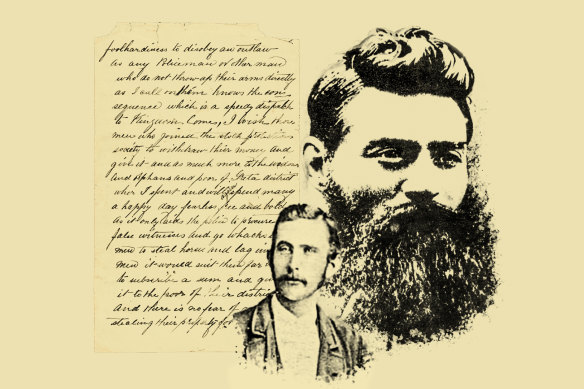
A page of Ned Kelly’s 8000-word-long Jerilderie letter, which he dictated to fellow bushranger Joe Byrne (left). Credit: The State Library of Victoria, Fairfax Library, digitally altered
Yet historians of the future might look more to our digital footprints than on any paper trails we leave behind. We’ve become creatures of the keyboard, firing off emails and text messages, punching reminders into our smartphones, ditching words altogether for emojis, our innermost thoughts hovering in the (digital) cloud. While we might still learn to write – and school exams are among the few documents still written – the power of the pen is in decline. Or is it? Is handwriting still important in the digital age? Does it have advantages over typing words? And can you really tell things about somebody’s personality from their handwriting?
Is handwriting really a window to the soul?
It’s long been thought that handwriting offers insights into personality. So-called graphologists or graphoanalysts have claimed that the way we form our letters indicates whether we are outgoing, introverted, or even deranged. In 1886, a Dr Peckham quoted in The New York Times declared that “insanity” was “readily distinguishable” in handwriting. “The waviness of the lines, the size of the letters, the tremulous upstrokes are each eloquent of unhealthful tissue in a particular corner of the machinery of the mind.”
In 1939, New York psychologist Nadya Olyanova examined Adolf Hitler’s handwriting and found “three outstanding traits: indecision, depression and morbid introspection”. “It takes no handwriting expert to recognise the cramped, drooping uncertain signature as a manifestation of the Fuhrer’s cramped, self-centred approach to life,” she wrote.
By the 1990s, US employers were using handwriting analysis to psychologically assess potential hires. “Like dreams, handwriting is a visible expression of behaviour that comes from the mind,” one graphoanalyst told The New York Times. “It reveals our true personality – those inherent traits that cannot be forged.”
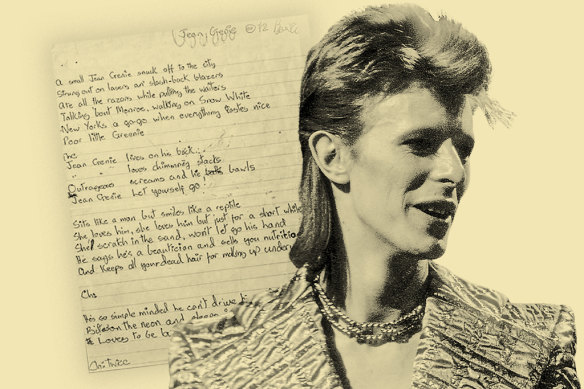
David Bowie wrote his Jean Genie lyrics on an A4 page in 1972, which sold for $110,000 at auction in 2023. Credit: Getty Images, Bonhams, digitally altered
Even Bowie got the treatment when his papers came up for auction in 2016. One magazine had a handwriting expert look over the longhand lyrics to The Jean Genie from 1972. “For someone who was so experimental,” they noted, “it is surprising that his writing is quite slow, upright to slightly left, with self-protective arcade structures ...”
Can we discern personality from pen strokes? Dr Carolyne Bird, widely regarded as preeminent in forensic handwriting analysis in Australia, says, “There have been a number of studies looking at the claims graphologists make, in terms of what they can deduce [about personality] from handwritten forms, and the outcome of those is that they’re no better than chance.”
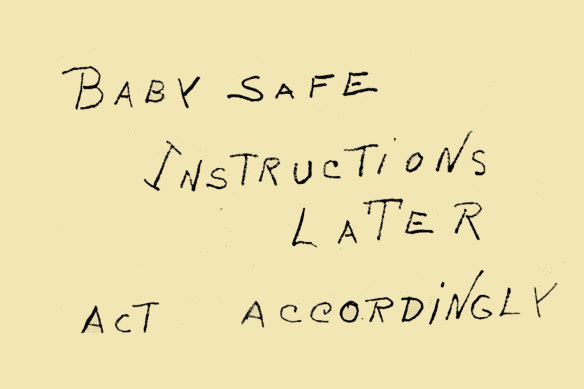
A postcard from the kidnapper in the 1932 Lindbergh baby case. Credit: Getty Images, digitally tinted
That’s not to say handwriting isn’t interesting in its own way. How you hold a pen, how hard you press, where you start and in which direction you form letters (clockwise or counter-clockwise) – they all form a picture that is, if not a portal into the dark corners of your psyche, at least particular to you. Which is how handwriting can even be incriminating.
An idiosyncratic note left when toddler Charles Lindbergh jnr (son of the aviator) was kidnapped in New Jersey in 1932, and several ransom notes that followed, became key evidence against the man eventually executed for the child’s murder. And the “Hitler Diaries”, sold to periodicals around the world, turned out to have been forged between 1981 and 1983, with handwriting that didn’t match Hitler’s, in books using the wrong kind of paper for the era and with polyester bindings that didn’t exist in Hitler’s lifetime.
Handwriting is analogous to a road accident. ‘You look at the road from above, you’ve got a pair of skid marks ...’
In Australia, says Carolyne Bird, handwriting analysis can come into play with forged documents such as wills, checking whether suicide notes were really written by the deceased, in cases of anonymous threatening letters, and with notes from drug dealers to be used as evidence: “What they call tick lists – who’s ordered what drugs from them and what they might owe.” The devil’s in the details: how a writer crosses their “t”s, or spaces their letters, or even the scratch marks made by the tiny housing around the ball on a ballpoint pen as it pushes into a sheet of paper.
The work of handwriting analyst Cliff Hobden includes checking whether signatures are genuine or suspect and scrutinising differences in letter design, proportion, alignment and spacing. Hobden, who does work for private investigation firm Lyonswood, says scrutinising handwriting is “analogous to a road accident”. “You look at the road from above, you’ve got a pair of skid marks. Those skid marks, if they go off the road at a particular angle, will clearly show what direction the car was travelling in.”
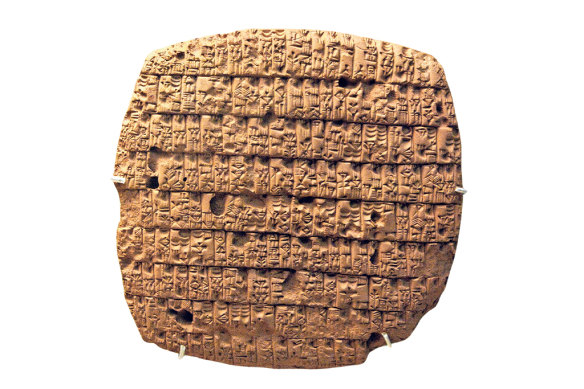
Beer rations are detailed in this cuneiform tablet from Mesopotamia, now Iraq, around 2351BC.Credit: Getty Images
Where did handwriting come from?
Writing was once largely the province of the elite or the people they employed, such as the medieval scribes who painstakingly copied the Bible onto parchment with quills of goose or swan feathers dipped in ink.
Exactly when “handwriting” began to appear as a day-to-day medium is a matter of debate and definition: Egyptologists might consider hieroglyphs as handwriting. What we can say with confidence is that writing, as opposed to simple drawings, began to appear from 3200 BC, largely on clay tablets in Egypt, China and Mesopotamia, the birthplace of cuneiform, a script that became the backbone of ancient written languages from Akkadian to Palaic.
“This is a super-interesting point in human history where people say, ‘OK, we need to write things down’,” says Louise Pryke, a researcher at the University of Sydney and one of the few Australian scholars who can translate cuneiform. “Trade becomes more complex, and social interactions and so forth become more complex. Administration is a driving force behind developing the writing system.”
‘Oh! Charles writes in the most careless way imaginable. He leaves out half his words and blots the rest.’
Jane Austen, Pride and Prejudice
The world’s first known named author, the Sumerian priestess Enheduanna, wrote in cuneiform around 2200 BC, says Pryke. Back then, it wasn’t uncommon for women to write – it was considered a handicraft. What cuneiform was not, though, was an alphabet; instead, it is a collection of marks that look rather like “chicken scratchings”, says Pryke. It was the Phoenicians who took the credit for the first alphabet, about 1000 years later, which, oddly, had 22 consonants but no vowels.
Writing systems developed in many pockets of the globe, from Arabic scripts in the Middle East to Chinese, Japanese and more. In the Latin alphabet, early Roman cursive handwriting from around AD 300 became the “uncial” scripts from which today’s lettering evolved. The oldest surviving handwritten documents in Britain are waxed wooden tablets (a bit like ancient Etch A Sketches) made during the Roman occupation and unearthed from 12 metres of river mud during excavations in London between 2010 and 2013. (The jottings included supply orders and complaints about the locals and the roads, which, as we know, they eventually fixed.)
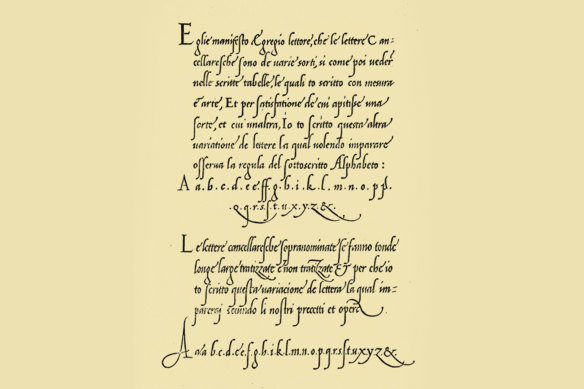
A page from Giovanni Antonio Tagliente’s 1524 manual for excellent handwriting.Credit: Wikipedia, digitally tinted
During the Renaissance, Venetian writing master Giovanni Antonio Tagliente offered a DIY approach to handwriting in his popular The True Art of Excellent Writing in 1524, tackling various scripts, including in Hebrew and Arabic (diplomatic scribes were among his target audience). The volume still has currency: a fourth-edition copy sold at auction for $15,000 in 2013. Tagliente published other self-help books, too, on arithmetic and embroidery and love letters – which, given the intimate nature of handwriting, are surely still worth cracking out a pen for.
By the early 1800s, and the brief flowering of Regency England, penmanship was a mark of status and class. Jane Austen’s Pride and Prejudice is full of letter writers and the occasional handwriting snob. “Oh!” exclaimed Caroline Bingley of her brother’s missives. “Charles writes in the most careless way imaginable. He leaves out half his words and blots the rest.” Most educated folk had their own pen knife, a tool for sharpening their pens, which were still quills made from feathers.
The “peak handwriting” era soon followed. By 1850 in Australia, cursive was being taught, particularly forms of Copperplate, an ornate style (named for the copper plates on which it was engraved to print handwriting manuals) that had emerged in the 1600s. Your grandparents (probably) had excellent handwriting; their grandparents almost certainly did. Ned Kelly actually dictated his Jerilderie letter – 8000 words of flowing, looping cursive – to fellow gang member Joe Byrne, who apparently had better handwriting, although Ned could write too.
By the 1970s, ornate variants had largely been erased in schools by writing styles that were easier to learn and faster to use. There are currently five main types of joined-up handwriting taught in Australia, all derived from Modern Cursive, a style imported from Britain in the mid-1980s, according to Kevin Brown, whose website Australian School Fonts offers resources for students and educators. “This new method prioritised cursive writing from the outset by making sure that the students were taught to form letters in such a way that it led naturally to cursive writing.”
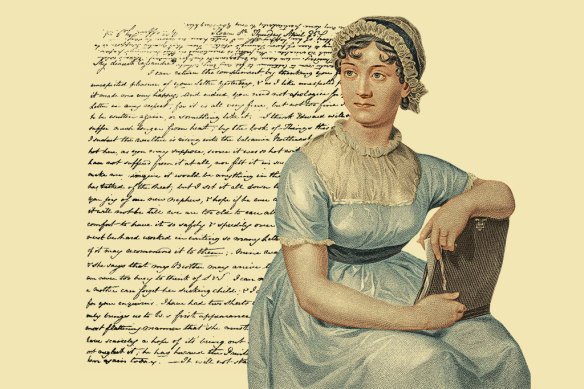
Jane Austen (painted here c 1790), and a letter to her sister Cassandra.Credit: Getty Images, digitally altered
Does handwriting still matter for kids?
The death of handwriting has been a long time coming. Johannes Gutenberg was blamed for its decline when he invented the printing press in the mid-1400s, putting furious Bible-copying monks out of work. Hungarian journalist Laszlo Biro popularised the ballpoint pen in the late 1930s (although it was first patented in 1888), making fountain pens redundant. Typewriters became commonplace last century, with The Sydney Morning Herald describing them in 1952 as “coming to the rescue of the lazy and the shamefaced”.
But the arrival of laptops and tablets in schools and universities from the early 2000s seems a true extinction moment, and not just in the West. Perfect hand script is becoming increasingly rare in China, reported The South China Morning Post in 2022. “So much of communication in China and the world in general is digital that it is normal for the average person to go long periods without using traditional handwritten communications.”
The necessity of teaching cursive is continually debated in educational circles, with battle lines drawn around its relevance in a world of keyboards versus its supposed benefits for early learning. In the US, individual states have variously abandoned or re-enforced the teaching of longhand (California: yes; Indiana: no). “For many students, cursive is becoming as foreign as ancient Egyptian hieroglyphics,” declared The Washington Post in 2013.
‘Because of the E and O, you can sort of guess. A few illegible letters can change the whole word, making it impossible to read.’
Finland, that educational Mecca, ditched cursive and offered more typing skills in 2016. In 2023, neighbouring Sweden swung back and tweaked its syllabus to give children more time to learn handwriting and less time on tablets. For now, learning to write by hand is still mandatory in Australian schools. But its teaching and – critically, ongoing practice – is not as ruthlessly policed as it would have been a few decades ago. It might not be seen to matter, except that our students – with rare exceptions – are still required to complete exams by hand.
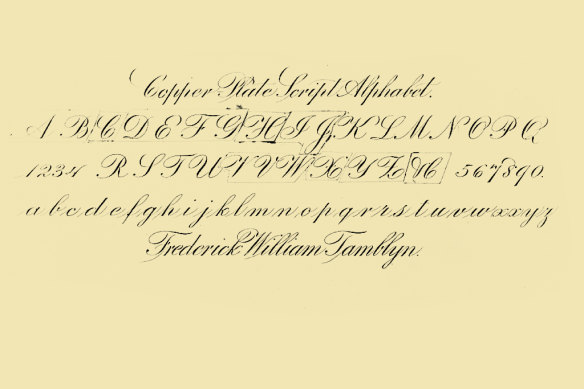
F. W. Tamblyn’s guide to Copperplate script from the Penman’s Art Journal, 1905. Credit: University of Scranton
At least one school has recently owned up to the problem, with St Andrew’s Cathedral School in Sydney offering its students out-of-hours coaching on posture, hand-strengthening and mobility. “In recent years, students worldwide have faced increasing difficulty in maintaining legible handwriting at the required speed and endurance for formal examinations,” deputy head of quality teaching Dr Kirsten Macaulay has said.
Children really need to learn to write properly and then to use it or lose it, says Mel Micallef, an occupational therapist based in Melbourne. “Often the legibility and all those foundational skills fall by the wayside, and you can’t read what they’re writing,” she says. During the pandemic, Micallef observed her own daughter, in prep, remote learning at the kitchen bench and wondered what would happen to all the other children who weren’t getting intensive handwriting instruction “and what the consequences would be down the track”. She quit her job and started a business, Ready, Set, Write, helping young children who struggle to develop efficient, legible handwriting and assessing older students approaching exams for special consideration because their writing is so illegible it’s deemed a handicap.
“Here are some words from older kids,” she says, pointing to her screen. “What do you think that word is? Is it ‘lake’? No, ‘take’.” We peer at another word. “It looks like a Y but could be a funny-looking V or an incomplete H,” she says. We take a guess at a few more. Maybe “video”? Yes, “because of the E and O, you can sort of guess. A few illegible letters can change the whole word, making it impossible to read.” What is clear is that these students have put enormous effort into being understood yet even the most diligent examiner faced with their essays would have to throw in the towel.
Unfortunately, chronic problems such as incorrect pen grip (clenched in a fist or between fingers rather than the classic “tripod” between thumb, forefinger and middle finger) can take a lot of effort to remedy, says Micallef. “It is really tricky to change pencil grip beyond grade 2.” That said, just practising handwriting daily will help yours improve: she suggests dedicating 16–17 minutes a day to writing of any kind (that’s around 100 hours a year). Micallef and other experts also suggest making sure the first and last letter of every word is always legible – with those in place, it’s much easier to guess what the word says.

Author Garry Disher with a page of one of his manuscripts. Credit: Joe Armao, manuscript courtesy Garry Disher
So why bother to handwrite at all?
Apart from the occasional prosaic necessity – taking an exam, filling out a form – there is plenty of evidence that writing by hand reaches parts of the brain that merely typing can’t: that the unique combination of fine motor skills and thinking helps us process and retain information better. Studies have shown that handwriting can boost connectivity across brain regions, improving spelling accuracy, memory and conceptual understanding.
“When writing by hand, brain connectivity patterns are far more elaborate than when typewriting on a keyboard,” Professor Audrey van der Meer, from the Norwegian University of Science and Technology, said in January. “Such widespread brain connectivity is known to be crucial for memory formation and for encoding new information and, therefore, is beneficial for learning.”
When you take notes by hand, for example, you are more likely to consider what to put down, editing and condensing as you go, while bashing away at a keyboard can be more automatic. Indeed, a 2014 study by psychologists at the University of California found that students who took notes by hand understood the material better than those who used laptops for note-taking. Conversely, in 2020, an analysis of 3000 US college students found their performance suffered when they typed their notes rather than handwriting them. “It’s partly to do with information processing – it takes you longer to think about what you’re going to write,” says Dr Annie McCluskey, an occupational therapist at the University of Sydney.
‘I edit as I go along, I cross things out. I make notes to myself, draw arrows across the page.’
Garry Disher, writer
Several prominent novelists agree. Horror writer Stephen King wrote his first novel by hand (and parts of several others), once telling an interviewer the fundamental nature of taking something in your fist and physically making letters on a page “takes you back to childhood, when you learned to write and when you dared to dream.”
Sci-fi author Neal Stephenson uses a fountain pen despite his love of technology and future imaginings. Another US novelist, Donna Tartt, uses ballpoint and then colour-coded pencils for revisions. J.K. Rowling wrote the Harry Potter manuscripts in ballpoint (they later sold for hundreds of thousands of dollars). The late David Foster Wallace (who wrote the door-stopper Infinite Jest) observed that while he could type much faster than write, “writing makes me slow down in a way that helps me pay attention.”
In Australia, thriller writer Garry Disher is another longhand addict, and has his own superstition. “I’ve heard other writers say the same thing, that there has to be the right setup or all the magic leaks away,” he tells us. “For me, it has to be blue, Biro, never black.” He handwrites a first draft and then edits it as he types up the manuscript. “I can write very quickly,” he says. “I edit as I go along, I cross things out. I make notes to myself, draw arrows across the page.” Melbourne poet and novelist Philip Salom writes prose on a computer but poetry in longhand. “I have to write by hand when I’m writing poems,” he says, “because it’s sensuous.”
Fascinating answers to perplexing questions delivered to your inbox every week. Sign up to get our Explainer newsletter here.
Let us explain
If you'd like some expert background on an issue or a news event, drop us a line at explainers@smh.com.au or explainers@theage.com.au. Read more explainers here.